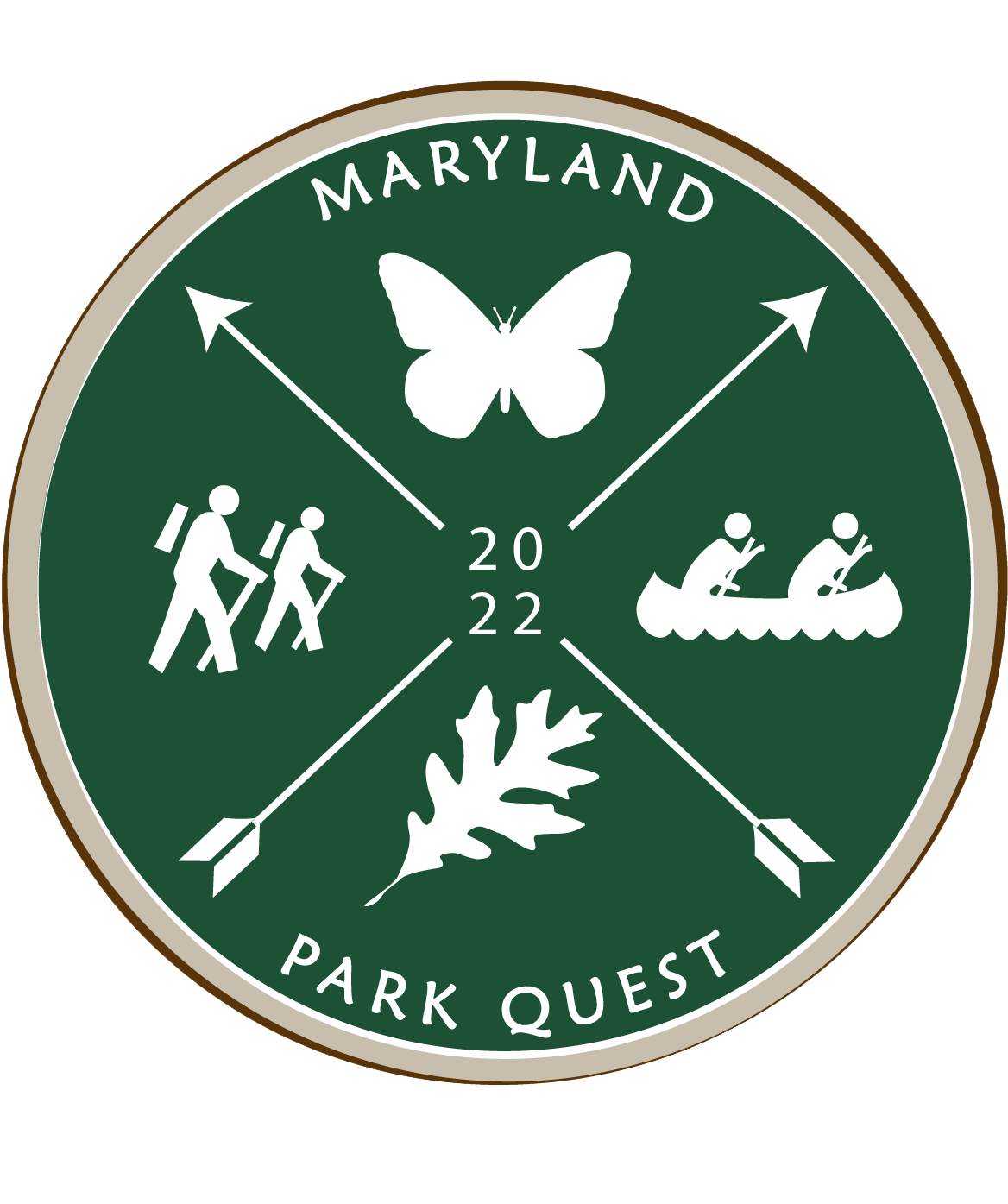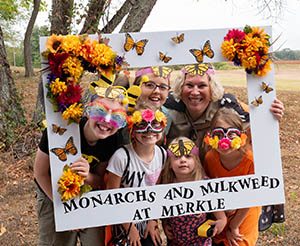
Event Quest: Monarchs & Milkweed at Merkle
Saturday, September 24 from 10 a.m. to 2 p.m.
Quest Materials
Each summer in the United States and southern Canada, the beautiful, orange-and-black monarch butterfly can be seen fluttering from flower to flower, foraging for nectar. They are one of the most beautiful and interesting creatures in the insect world, and they are a source of fascination for many. Most fascinating is their migration: each fall, millions of monarch butterflies leave their summer breeding grounds in the northeastern U.S. and Canada and travel some 3,000 miles south to Mexico to escape the cold of winter—a migration that’s one of the greatest natural events on Earth!
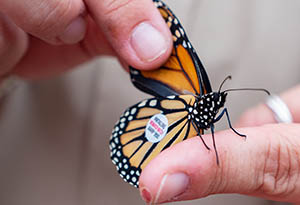
Monarch Butterfly Trivia! Did You Know?
- The adult female monarch butterfly lays tiny eggs covered with a sticky substance on the underside of milkweed leaves, which are toxic to most herbivores. The caterpillar hatches from its egg several days later and survives on only milkweed leaves. No milkweed, no monarchs!
- The monarch caterpillar and adult butterfly retain the poison from the milkweed leaves in its body, thus protecting it from being eaten by predators. The monarch butterfly’s bright colors serve as a warning to predators that they are poisonous, and they should attack at their own risk! The adult butterfly has very few predators.
- Every spring, adult monarch butterflies head north from their winter respite in the southern forests of Mexico and California, and return in the fall—a journey some 2,000-3,000-miles each way!
- The monarch butterfly will continue to feed, fly, and reproduce throughout the U.S. and southern Canada, for several generations. It is the fourth generation of monarch butterflies that actually migrate to Mexico in the fall.
- Monarch butterflies can travel as much as 100 miles a day during the 3,000-mile migration south.
- During its migration, each butterfly relies on the huge volume of food it ate when it was a caterpillar for fuel.
- Monarchs smell with their antennae. Nectar and water are tasted by the sensory hairs on their legs and feet.
- Monarch butterflies cannot bite, and drink through a long tongue called a proboscis that works like an eyedropper drawing up nectar. Like a retractable garden hose, its tongue coils up under its lower lip when not in use.
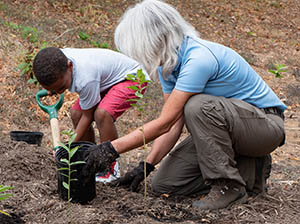
Merkle Natural Resources Management Area
Merkle Natural Resources Management Area is over 1,900 acres of forest, marsh, and farmland on the Patuxent River in Upper Marlboro. It is the largest resting grounds of migratory Canada Geese as they fly south for the winter. Merkle NRMA is also a great resting spot for the monarch butterfly as it makes its migration south! Merkle NRMA has over 10 miles of trails to explore and a visitor center that is open year round.
Address:
Merkle Natural Resources Management Area
11704 Fenno Road
Upper Marlboro MD 20772
Contact: Duty Ranger - 443-510-9920
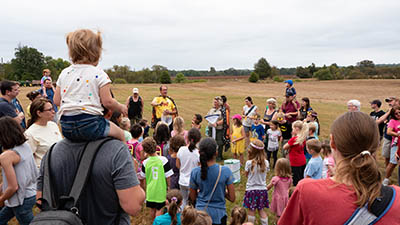
Directions
From Annapolis: 32 miles
Follow Route 50 West to Route 301 South. Continue on Route 301 South to Croom Road (Route 382). Turn left on Croom Road. Continue on Croom Road and turn left on St. Thomas Church Road, which will turn onto Fenno Road. Continue until you see Sanctuary signs on your left at Merkle Road.
From Baltimore: 38 miles
Exit Beltway (I-695) at Route 97 South. Follow to Route 3 South and then to Route 301 (joins at the junction with Route 50). Continue on Route 301 South to Croom Road (Route 382). Turn left on Croom Road. Continue on Croom Road and turn left on St. Thomas Church Road, which will turn into Fenno Road. Continue until you see sanctuary signs on your left at Merkle Road.
From Washington, D.C.: 11.7 miles
From Beltway (I-495/95) follow to Exit 11 at Route 4 East (Pennsylvania Avenue) toward Upper Marlboro. Continue on Route 4 to Route 301 South. Continue on Route 301 South to Croom Road (Route 382). Turn left on Croom Road. Continue on Croom Road and turn left on St. Thomas Church Road, which will turn into Fenno Road. Continue until you see sanctuary signs on your left at Merkle Road.
